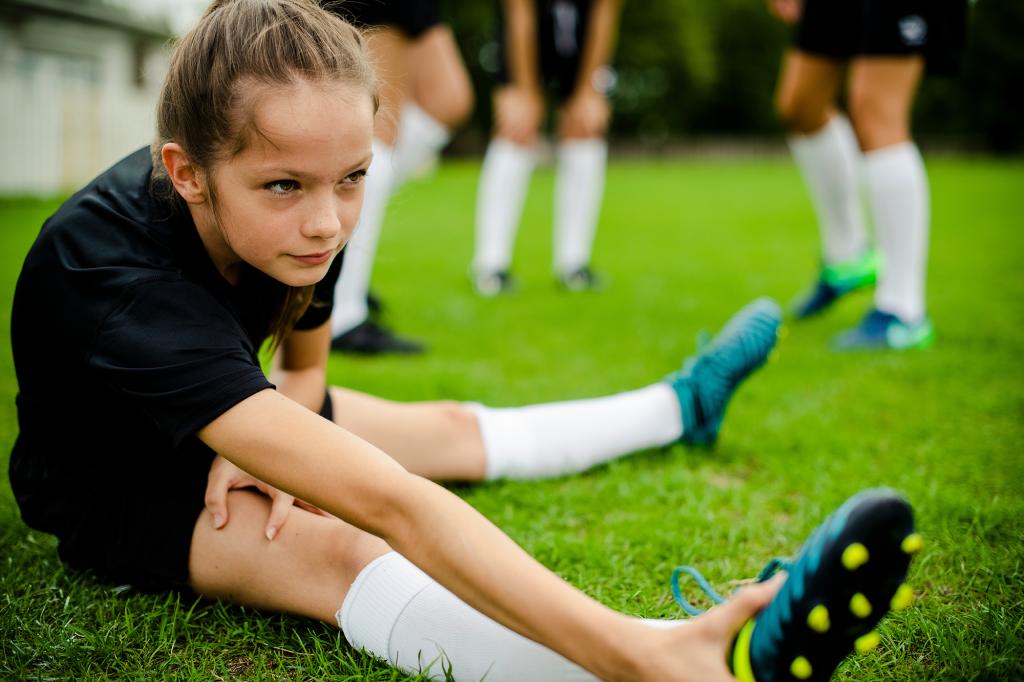Nurturing Young Athletes: A Guide for Parents
In the realm of youth sports, where over half of children aged 6 to 17 participate, establishing good habits early is crucial for both performance and safety. As your child embarks on their athletic journey, your role as a parent extends beyond cheering from the sidelines—it involves creating a foundation for their success while protecting their physical and mental well-being. With thoughtful preparation and ongoing support, you can help your young athlete thrive in their sporting endeavors while minimizing the risk of injuries and burnout.
Before the season kicks into high gear, take time to understand the environment your child will be training in. Start by asking important questions about safety protocols and available resources. Is there an athletic trainer or physical therapist on site? What strength and conditioning programs are available, and who supervises them? For outdoor sports, inquire about weather protocols—what happens during thunderstorms or extreme heat? Check if there’s an ice bath available for heat-related emergencies. Crucially, confirm the presence of an automated external defibrillator (AED) and ensure everyone knows its location. While sudden cardiac death in young athletes is rare, having an AED readily accessible can be lifesaving. Remember, these devices are designed to be user-friendly with voice and visual instructions, requiring no special training. By gathering this information upfront, you’re creating a safer environment for your child’s athletic pursuits.
The transition from summer leisure to sports intensity requires a gradual approach. If your child has been relatively inactive during the break, don’t expect them to immediately jump into five-day-a-week practices. Instead, encourage them to ease back with light jogging or casual pickup games that don’t demand the same intensity as competitive play. Pay special attention to stretching, particularly if they’ve experienced a growth spurt over the summer. During rapid growth periods, muscles and tendons must stretch to accommodate lengthening bones, often becoming tight and more susceptible to injury. Regular stretching not only improves flexibility but helps prevent both sudden and overuse injuries. By taking this measured approach to returning to sports, you’re setting your child up for a successful and injury-free season.
Youth sports come with several potential pitfalls, with overuse being perhaps the most significant concern. One aspect of overuse is simply the volume of activity—children’s growing bodies can’t handle the same training load as adults. A helpful guideline is that weekly participation in organized sports (including practices and games) should not exceed the child’s age in hours. For a 10-year-old, that means limiting sports activities to 10 hours or less per week. Equally important is encouraging sport diversification rather than early specialization. Playing the same sport for more than eight months yearly can lead to burnout, acute injuries, and repetitive stress. Multi-sport participation engages different muscle groups and movement patterns, promoting more balanced physical development. Another common mistake is focusing exclusively on major muscle groups while neglecting smaller supportive muscles. The core muscles—including paraspinals in the back and obliques along the sides—deserve special attention. A strong core not only helps prevent lower back pain but can enhance performance, helping runners sprint faster and pitchers throw with greater velocity. These smaller muscle groups can make a significant difference in both injury prevention and athletic achievement.
Proper preparation before practice and adequate recovery afterward are essential components of athletic success. Encourage your child to arrive 5-10 minutes early for practice to jog lightly or perform dynamic stretches like butt kicks and monster walks. Structured warm-up routines such as the FIFA 11+ or PEP programs can significantly reduce injury risks, including serious ones like ACL tears. After practice, emphasize the importance of not rushing home but instead taking 5-10 minutes to stretch and rehydrate. Nutrition plays a vital role in athletic performance too—the food your child consumes provides the building blocks their body uses to repair and build tissues. As children gain independence, maintaining good nutrition becomes more challenging. Guide them toward complex carbohydrates and adequate protein to support muscle development rather than relying on sugary convenience foods. Hydration remains crucial year-round, not just during summer months. Ensure your athlete brings enough water to practice, drinks throughout their workout, and continues hydrating when they return home.
Rest and recovery are fundamental aspects of athletic training that are often overlooked. Exercise causes microscopic damage to muscle fibers, and it’s during rest periods and sleep that the body repairs and strengthens these muscles. Encourage your child to take one or two days off from sports each week and prioritize sufficient sleep as consistently as possible. Children aged 6-13 should aim for 9-11 hours of sleep, while teenagers need 8-10 hours for optimal recovery. Know when medical attention is necessary—if your child cannot walk or bear weight on a joint, experiences significant swelling, or cannot fully bend or straighten their knee, consult a healthcare provider promptly. While some clicking or popping sensations might be normal if painless, playing through pain is never advisable. Pain alters biomechanics, increasing the risk of additional injuries while limiting the benefits of practice. Sports can contribute tremendously to a child’s development and happiness, but returning to play must be done properly, with safety as the priority. With your informed support and guidance, your young athlete can enjoy the numerous benefits of sports participation while building healthy habits that will serve them throughout their lives.


